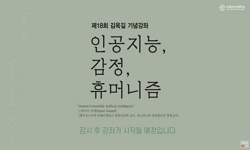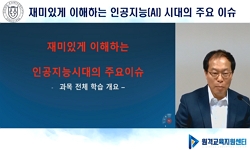인공지능에 관한 국제특허분류(IPC)와 악기에 관한 국제특허분류(IPC)를 이용하여 악기 인공지능 관련 특허 288건을 선별하였다. 1989년 야마하에서 악기 인공지능 특허가 처음 출원된 이래 악...
http://chineseinput.net/에서 pinyin(병음)방식으로 중국어를 변환할 수 있습니다.
변환된 중국어를 복사하여 사용하시면 됩니다.
- 中文 을 입력하시려면 zhongwen을 입력하시고 space를누르시면됩니다.
- 北京 을 입력하시려면 beijing을 입력하시고 space를 누르시면 됩니다.

악기별 인공지능 융합 기술 발전 연구 = Research on the development of artificial intelligence fusion technology for each instrument
한글로보기부가정보
국문 초록 (Abstract)
인공지능에 관한 국제특허분류(IPC)와 악기에 관한 국제특허분류(IPC)를 이용하여 악기 인공지능 관련 특허 288건을 선별하였다. 1989년 야마하에서 악기 인공지능 특허가 처음 출원된 이래 악기 인공지능 특허 수는 지속적으로 증가하였다. 2015년까지는 일본과 미국에서 주로 특허가 출원되었고, 2016년 이후에는 미국과 중국에서 주로 특허가 출원되었다. 악기 인공지능 특허는 미국 빅테크기업이 아닌 악기 제조사와 중국과 영국의 테크기업에서 주로 이루어지고 있었다. 2015년 이전까지는 악기 인공지능의 목적은 다양하였으나, 2016년 이후부터는 음악 생성에 대한 악기 인공지능 특허가 집중되었다. 약 80%의 특허는 특정 악기에 특화되지 않은 특허였으며, 나머지 약 20%의 특허 중 건반악기에 관한 인공지능 특허가 절반이었다. 건반악기에 관한 인공지능 특허는 연주를 보조하거나 평가하는 기술을 목적으로 하는 인공지능이었다. 관악기에 관한 인공지능 특허는 검색되지 않았다. 향후 어쿠스틱 악기와 인공지능 융합 기술에 대한 연구가 필요할 것으로 판단된다.
다국어 초록 (Multilingual Abstract)
Using the International Patent Classification (IPC) related to artificial intelligence and musical instruments, 288 patents concerning musical instruments AI were selected. Since Yamaha first filed a musical instruments AI patent in 1989, the number o...
Using the International Patent Classification (IPC) related to artificial intelligence and musical instruments, 288 patents concerning musical instruments AI were selected. Since Yamaha first filed a musical instruments AI patent in 1989, the number of such patents has steadily increased. Until 2015, patents were primarily filed in Japan and the United States, but since 2016, the majority of patents have been filed in the United States and China. Most musical instruments AI patents have been filed by musical instrument manufacturers and tech companies in China and the UK, rather than by major U.S. tech companies. Before 2015, the purposes of musical instruments AI were varied, but since 2016, patents have increasingly focused on AI for music generation. Around 80% of the patents were not specific to any particular instrument, while half of the remaining 20% involved AI for keyboard instruments. These patents primarily focused on technologies for assisting or evaluating performance. No patents related to AI for wind instruments were found. Future research on the integration of AI with acoustic instruments is considered necessary.
동일학술지(권/호) 다른 논문
-
- 차세대컨버전스정보서비스학회
- 전우훈
- 2024
- KCI등재
-
저조도 이미지 개선을 통한 도로 표면의 위험 검출 기술
- 차세대컨버전스정보서비스학회
- 김형규
- 2024
- KCI등재
-
자기분화와 자존감: 회복탄력성의 매개효과와 음악 기능의 조절된 매개효과
- 차세대컨버전스정보서비스학회
- 김요완
- 2024
- KCI등재
-
- 차세대컨버전스정보서비스학회
- 강은원
- 2024
- KCI등재
분석정보
연관 공개강의(KOCW)
-

[제18회 김옥길기념강좌] 인공지능, 감정, 휴머니즘(Human-Compatible Artificial Intelligence’)’
이화여자대학교 스튜어드 러셀 -

누구나 할 수 있는 데이터 분석과 인공지능[Data Analysis and Artificial Intelligence for Everyone]
K-MOOC 인하공업전문대학 이세훈 -

누구나 할 수 있는 데이터 분석과 인공지능[Data Analysis and Artificial Intelligence for Everyone]
K-MOOC 인하공업전문대학 이세훈 -

시대에 따른 한국의 악기 개론
이화여자대학교 곽은아 -

재미있게 이해하는 인공지능(AI)시대의 주요 이슈
동아대학교 손판도




 KCI
KCI

